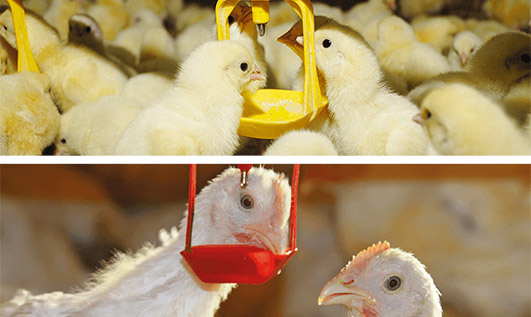Concept renewal and development strategies in poultry production... After decades of development, the chicken industry has gone from free-range farming to large-scale farming professional households, and then to family-scale farming and high-standard mechanized large-scale farming models. The facilities and equipment have been advanced, and the scale of breeding has expanded. The number has gone from dozens or hundreds to tens of thousands, or even hundreds of thousands. But breeders feel that it is becoming more and more difficult to raise chickens and economic benefits are getting lower. The reason is that, in addition to factors such as the increase in diseases, most of the farmers are still the original farmers, and a small part of them are transferred from other industries. The knowledge of these humans, animal husbandry and veterinarians is relatively lacking, and the key to breeding concepts and management models is not updated and improved.
1. Update of disease prevention concept
In the past, many people used the prevention of diseases in the use of vaccines and drugs. However, as the breeding environment is getting worse and worse, the breeding industry should establish the epidemic prevention concept of "cultivation is more important than prevention, prevention is more important than cure, combined maintenance and prevention". Everyone who is engaged in animal husbandry knows that raising chickens is not that simple. Every moment of emergency, big or small, is related to whether the chickens can be released normally. One of the most troublesome things is the outbreak of infectious diseases in chickens, ranging from not making money, to losing money. How to prevent the disease and raise a good chicken is the top priority for the success or failure of breeding.

2. Update of management philosophy
The success of breeding depends on management, and the details determine the success or failure of breeding. The breeder of each hen house is more familiar with the hen house and flock he is responsible than the owner. For example, whether the water line is blocked, whether some chickens can't drink water, whether the equipment is working normally, etc., must be found by the breeder. The management personnel should communicate with the breeders diligently, caring diligently, combine responsibilities and rights, and fully stimulate the employees' sense of responsibility. The success or failure of breeding depends on different seasons and the specific conditions of each chicken house.
3. Raising chickens should be of appropriate scale and reasonable batches
When choosing to build a site, determine the size of the scale. It must match its own technology, conditions, capital, manpower, environment, etc., and cannot blindly pursue a super large-scale breeding model. Ultra-large-scale farming requires high investment, and automated poultry farming equipment is more expensive. If farmers choose large-scale farming when they have no farming experience, they will often not get better profits in the early stage. Of course, if investors invest in experienced farmers to start this business, it is certainly possible.
4. Automation, intelligence, and standardized breeding are the development direction of the chicken industry
Automated poultry breeding equipment can make the chicken coop realize automatic quantitative feeding, mechanized manure removal, automatic water supply, and regular spray disinfection. Realize automatic control of light, temperature, humidity and ventilation. In the current situation where the wages of personnel have increased significantly and the recruitment of breeders has become increasingly difficult, a lot of labor can be saved and labor intensity can be reduced. One person can manage tens of thousands of laying hens and tens of thousands of broilers.
